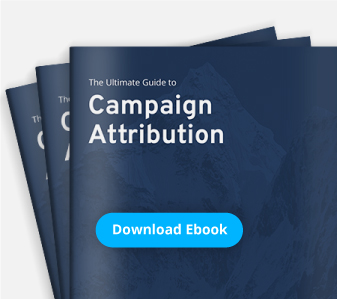This article references attribution concepts and insights sourced from The Ultimate Guide for Campaign Attribution.
Accomplishing attribution means empowering GTM teams with the insight to understand what is working and what is not. However, there are multiple components and systems that need to be in place first before being able to analyze data on the campaigns that are driving results for the business.
There are intricacies to each aspect, but first comes understanding the essential items that need to be configured and what they entail.
The Foundation for Campaign Attribution

#1
Campaign Structure
A campaign structure is the foundation of anything related to attribution. These campaigns live in the CRM, which provide the ability to associate them with leads, contacts, and then deals that they are tied to.
Contrary to what some teams assume, a campaign architecture should not just include marketing efforts, but also sales. Most marketing generated leads are not being converted by marketing, unless a team has a BDR or SDR structure under marketing, that is the exception to the rule. Meetings are typically generated which then causes conversion after an interaction with sales. Thus, seeing both marketing and sales campaigns in the same structure enables them to work in tandem with each other, advancing leads through the funnel.
Including both sales and marketing campaigns in the hierarchy, SaaScend recommends a structure (fig. 1) that has the solution, the product or service that the business sells, at the top, the asset related to that solution underneath, and then the promotional channels driving traffic to that asset, as the lowest tier.
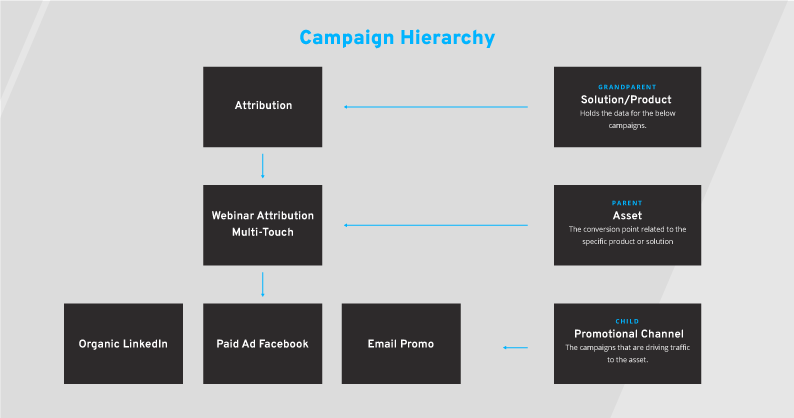
Fig. 1 SaaScend Campaign Hierarchy – An example of the hierarchical structure in practice for a webinar on multi-touch attribution that uses organic LinkedIn, paid Facebook ads, and promotional emails to drive registrations.

Convert New Accounts with Former Customers
#2
Attributable Links
Using trackable links with UTM parameters gives teams the insight into both the promotional channel and the conversion point. These links are then tied back to the campaign which then allows the data to display which channel drove the most leads.

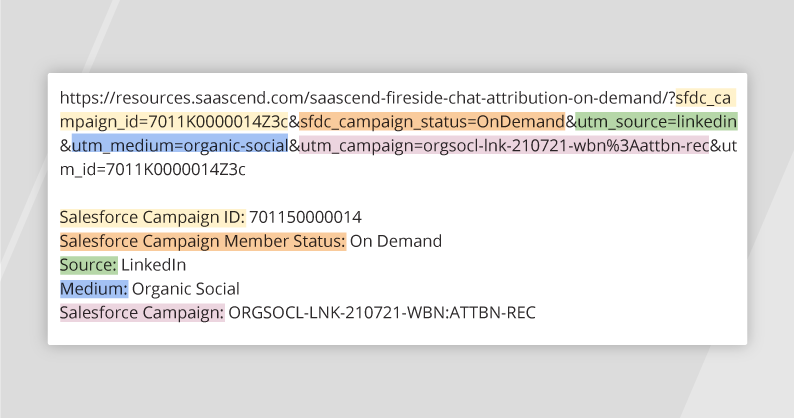
Source: The Ultimate Guide to Campaign Attribution p. 13, 2021
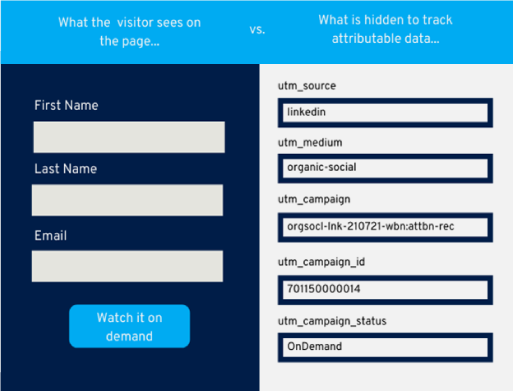
Fig. 2 A form revealing the hidden fields used to track the promotional channel of the webinar registrant. In this case, the person came from LinkedIn.
Marketing automation platforms inform marketers of how prospects converted, the landing page for their ebook, the registration for their webinar, but the systems are less reliable on capturing the channel that actually drove the prospect there in the first place. Reason being is that these technologies rely on cookie tracking.
The eventual truth is cookies are going to become obsolete. Google will soon be banning third-party cookie tracking from the Chrome browser and according to Statista, Google accounts for 67.56% of the global desktop internet browser market share. Due to data privacy laws such as GDPR, website visitors also must first opt-in to this cookie tracking. The most recent of these is the iOS 15 update, giving users the power to manage access to their data.
Overcoming any gaps in data due to a lack of cookie tracking can be done by passing through UTM’s with hidden fields (fig. 2). These UTM’s are used in the URL’s created and then hidden fields on a form record the parameters from the URL, tracking at a minimum, the prospect’s source, the medium of the campaign that drove them there, the campaign name itself, the CRM campaign ID, and the campaign status.
Getting Started with Attribution

#3
Choosing an Attribution Model
As campaign data is collected, the question is, how should it be modeled (fig. 3)? Should all the credit be given to the first touch, the last, or should all of the touches be given some credit while having certain engagements be weighted more than others?
In another article, Choosing the Right Attribution Model for Your Business, we explain the different considerations to have when going through and choosing which model to pick. Our advice to avoid the adage, analysis paralysis, is to just pick a heading and start.
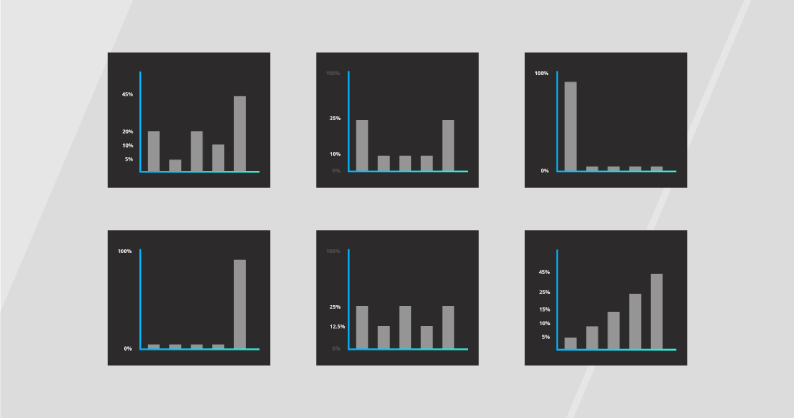
Fig. 3 Attribution models visualized from left to right. First row: Custom Model, U-Shaped, and First Touch. Second row: Last Touch, W-Shaped, and Time Decay.
As the model is implemented, it is something that needs to be defined in alignment across marketing, sales, and operations and should be reviewed and refined to maintain relevance for the organization.
#4
KPI’s and Insights
The whole reason for the campaign hierarchy, the attributable links, and choosing an attribution model, is to be able to analyze data and determine which efforts are successful. None of this can happen if reporting mechanisms are not in place and criteria has not been defined on how data will be measured.

Aside from campaign ROI, there is pipeline influence, meetings and leads generated, and prospects that advance onto becoming Marketing Qualified Leads. Having a full view of the funnel is imperative. This informs teams of the types of campaigns that cause faster funnel acceleration. Which types of campaigns generate more leads, then MQL’s, then pipeline, and then just how fast are the buyers moving from stage to stage?
Establish the business questions that need to be answered, define the metrics and KPI’s for campaigns, and then make sure a reporting structure is in place to actually analyze the data collected.
Connection with the CRM

#5
Lead Capture to the CRM
Many organizations deal with the challenge of having data in disparate systems, but in order to achieve attribution, lead data captured from forms and chatbots need to live in the same database that also holds meetings, opportunities, and pipeline, the CRM.
If this data lives in a siloed database, it causes more operational costs for teams to export and import information, to then try and assemble the puzzle pieces to have a full view of their marketing campaign performance.
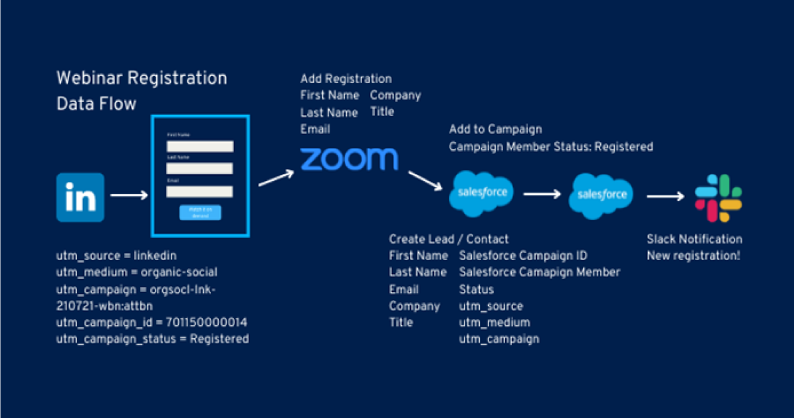
If the marketing automation system is integrated with the CRM, then data can be transferred. However, if data is unable to be integrated with the CRM, then custom solutions need to be configured. This is where platforms such as tray.io can supplement and help to automate the processing of this data, eliminating the need for manual exports and imports.
#6
Contact Opportunity Association
All of the above components can be done to achieve attribution, however, if there is no association of contacts with opportunities created in the CRM, then there will be no attribution.

The campaigns created from the hierarchy, previously discussed, are tied to the people that interact with them. The only way to attribute revenue influence back to the campaigns, is to make sure that the contact is associated with the opportunity.
In B2B, organizations can have 6 – 8 people on a buying committee, so who should be associated with the opportunity? At minimum, there needs to be at least one person, but all of the major stakeholders with that deal should be tied to the opportunity. Consider the decision maker, the person signing the contract, the champion or the influencer, who could also be the point of contact, and the technical evaluator. This ensures that the campaigns get the credit they deserve. For example, the decision maker may only attend a small roundtable discussion that the CEO has, but meanwhile the influencer has already interacted with a webinar, subscribed to the blog, and downloaded a whitepaper.
Including all of the key members of the buying committee on an opportunity also gives insight as to the different types of campaigns that each persona is interacting with. Helping marketing and sales to strategize and identify patterns of campaigns that will cause different buyers on an account to advance towards conversion.
#6.5
The Will to Initiate
As Founder and CEO, Craig Jordan shared on our attribution fireside chat, “there is never a bad time to implement.” The process to achieve campaign attribution can seem overwhelming, but the bigger risk at stake is continuing to execute campaigns and invest budget into initiatives that may not be winning any results for the business. What attribution brings is insight and clarity. Therefore take the first steps, and get started.

“Now we feel our data is reliable and can accurately measure our ROI.”

